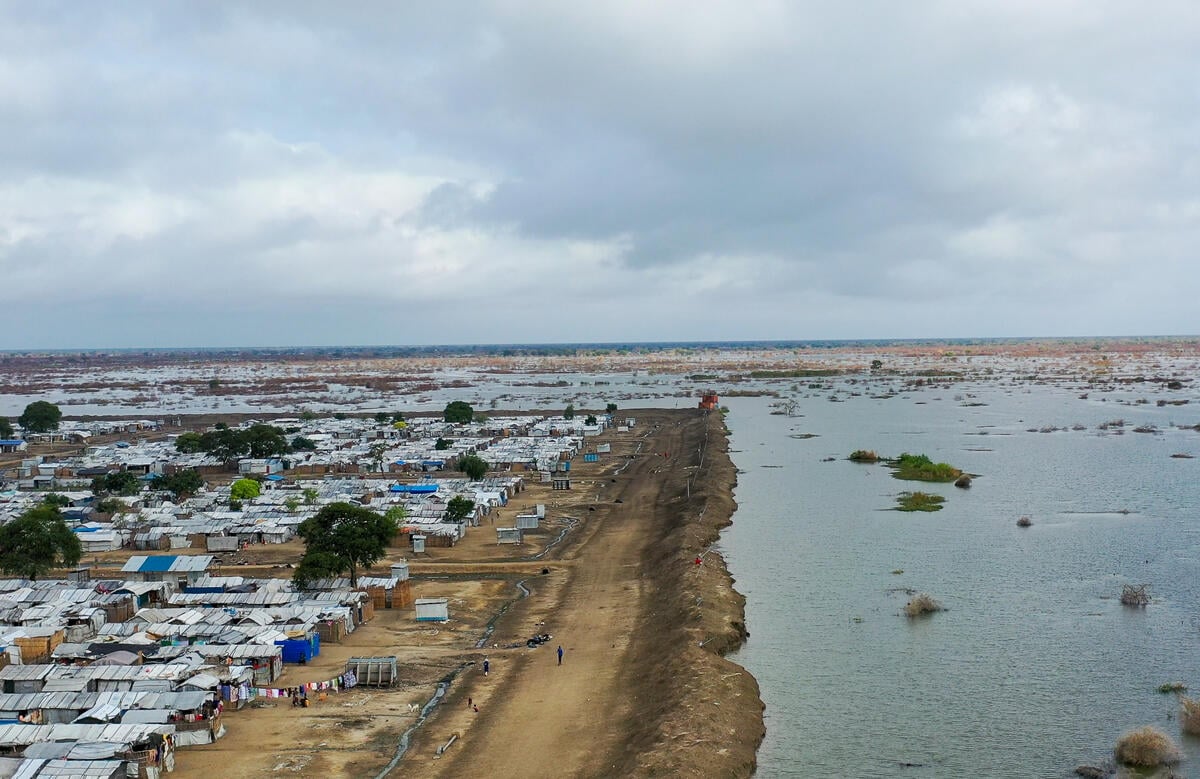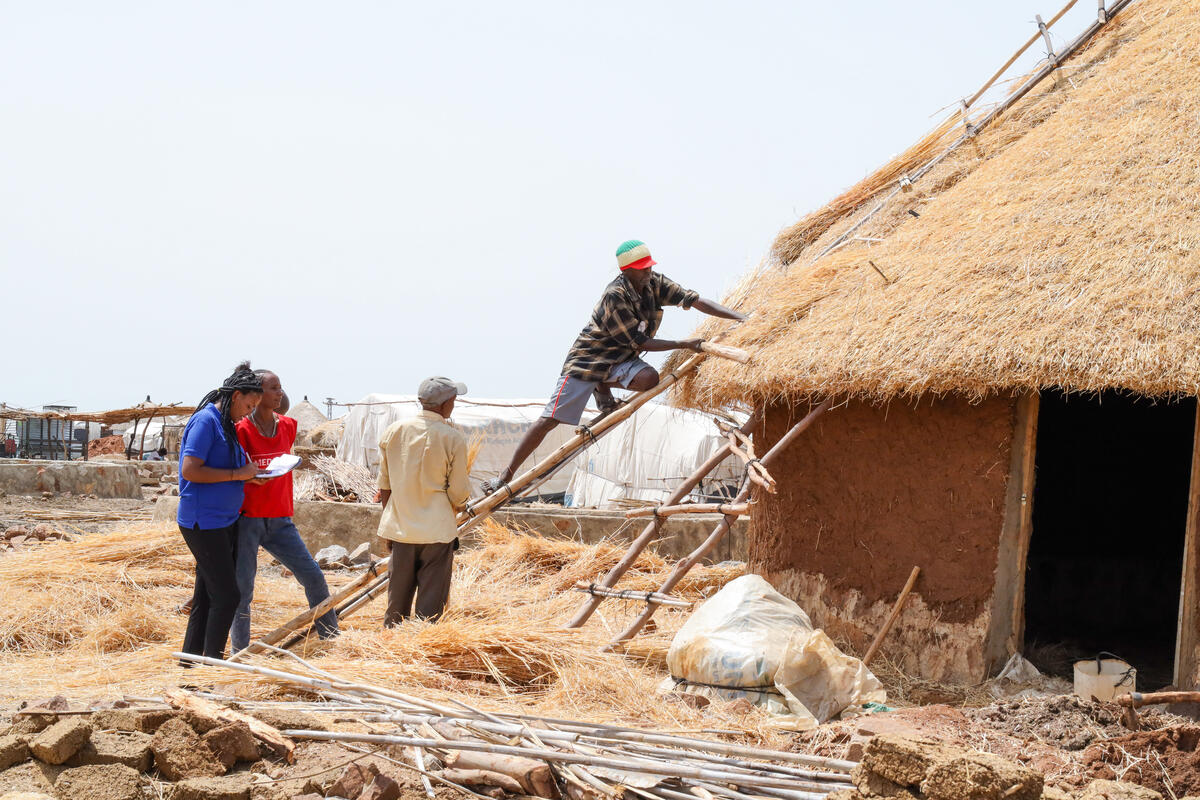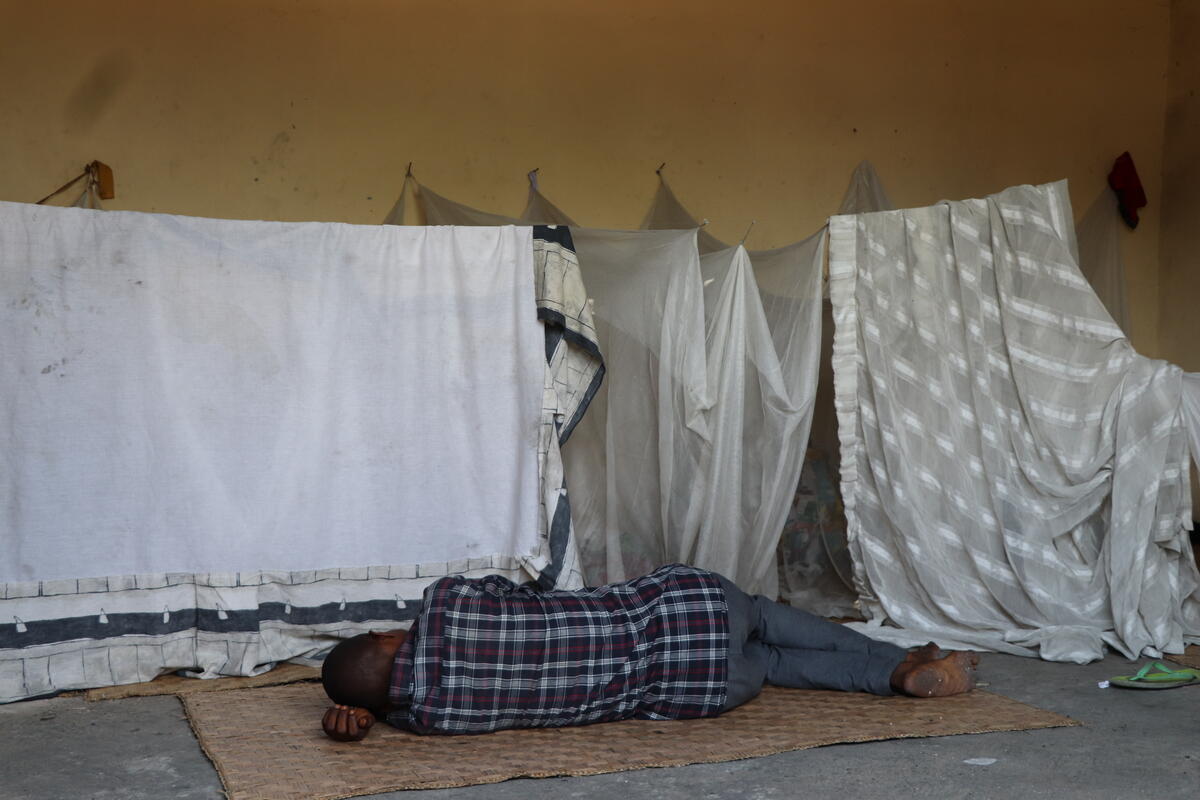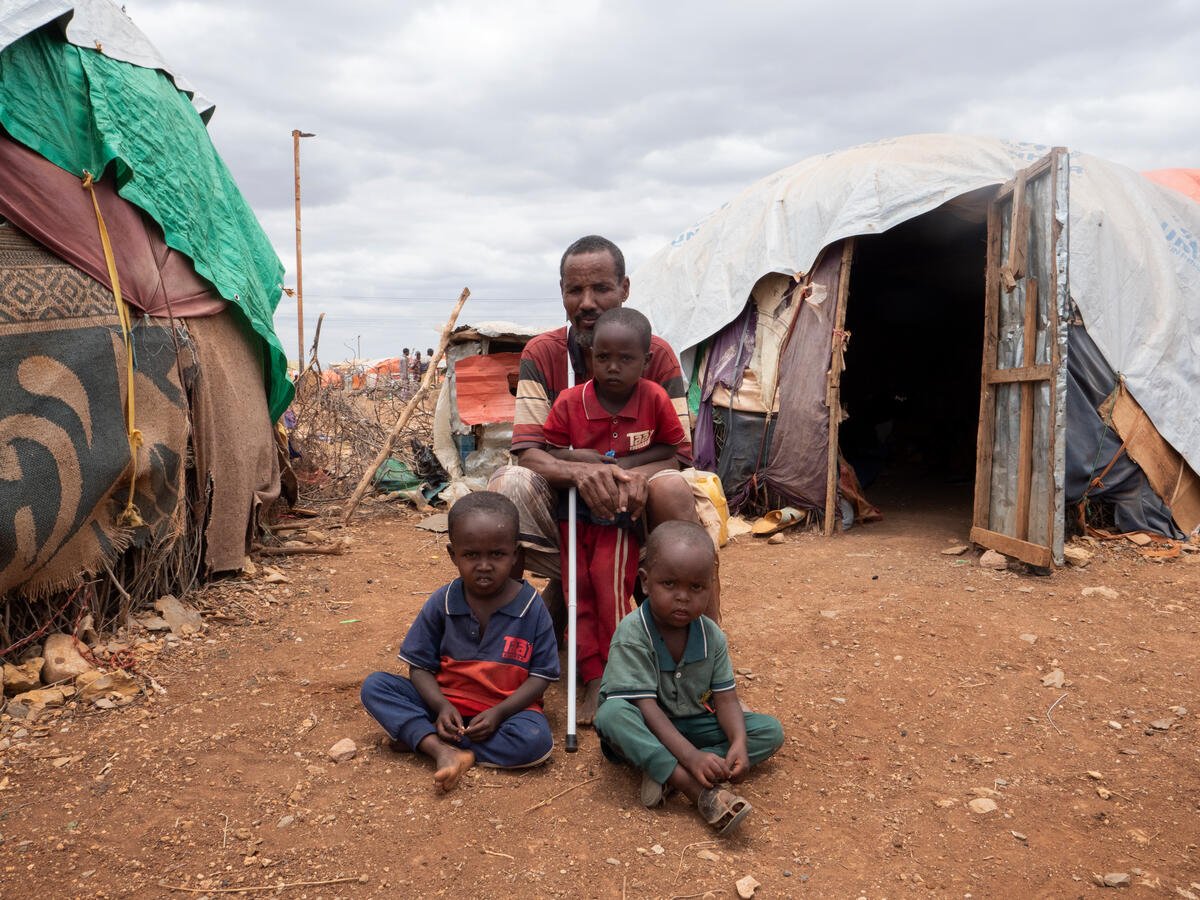Shelter or survival: a dilemma for the displaced in Sri Lanka
Shelter or survival: a dilemma for the displaced in Sri Lanka

KILINOCHCHI, Sri Lanka, December 22 (UNHCR) - For the past few months, home for Nageswary* and her five children has been a bare concrete floor in an open market near the northern Sri Lankan town of Kilinochchi.
Fighting between government forces and the rebel Liberation Tigers of Tamil Eelam (LTTE) is not far away, but she is torn about moving to a safer UNHCR relocation site. "I spend my days thinking and waiting," said Nageswary, who reluctantly fled her home when the combat came dangerously close in August.
For Nageswary, and more than 210,000 Sri Lankans like her, there is much to think about as they pray for an end to the violence that flared in April after four years of peace and the chance to go back to the homes they fled.
Foremost in their minds are the problems of where to live and how to survive. Nageswary, her children and a newborn grandchild are among 20 families still sheltering in the market.
They are among the lucky ones who have received basic supplies - including plastic sheets, sleeping mats, towels and mosquito nets - from UNHCR and partner agencies since August. Several thousand people in the rebel-controlled - and hard to access - Kilinochchi and Mullaitivu areas need such items.
"It made life a little easier, but in heavy rain, water still comes in between the tarpaulins," Nageswary said: "The temporary toilets made from barrels have begun to overflow and we must wash at the well by the roadside. There is no privacy."
At one point, 50 families squeezed under the roof of Nageswary's market but many have gone back home, taking the risk of getting caught in the crossfire so they can fish to feed their families. "I won't go back until the fighting stops," Nageswary stressed, but she faces a similar dilemma.
Nageswary knows she would be safer in a relocation site - indeed she has visited one inland - but she said that "from the market we can watch the weather and predict when the sea will be too rough for battles. Although dangerous, that is our chance to fish." It's clearly a matter of survival over shelter for some.
This dilemma is contributing to low occupancy at several relocations sites, as authorities try to accommodate more than 70,000 people registered as newly displaced across the LTTE-controlled districts of Kilinochchi and Mullaitivu.
Other sites remain vacant as agencies await the necessary resources to build adequate water and sanitation facilities.
"To move anywhere else would be a big challenge," said Nageswary, who has asked UNHCR for shelter material so she can move onto private land near the market. However, there are no facilities and considerable work needs to be done to make the location meet the most basic living standards. So Nageswary waits as the pressure for displaced families to vacate communal buildings grows.
Humanitarian agencies, just like the people they are trying to serve, are also faced with tough choices. In this case, UNHCR could not invest scant resources in a situation that would not be sustainable.
The refugee agency continues to discuss with host communities ways in which displaced persons, like Nageswary, could become involved in local income-generating activities. But, as restrictions on supplies progressively impact on the host population as well, more and more of the 335,000 residents of Mullaitivu and Kilinochchi respond by saying that they too are forced to resort to the same survival tactics, digging into financial reserves and selling household valuables.
To the extent the security situation permits, UNHCR and its partners endeavour to monitor the welfare of Nageswary and others like her and provide them with essential assistance. By the end of the year, UNHCR and its partners will have constructed some 4,000 emergency shelters for new displaced families across Sri Lanka and covered basic household needs for more than 17,500 displaced and host families. UNHCR alone has distributed some 20,000 tarpaulins to reinforce shelters and host family arrangements.
But this response depends on relief being able to reach the people who need it, like Nageswary. And for people in the conflict-affected areas of Sri Lanka, it has become a critical waiting game.
* The name of this person has been changed for protection reasons.
By Clare Graham in Kilinochchi, Sri Lanka








